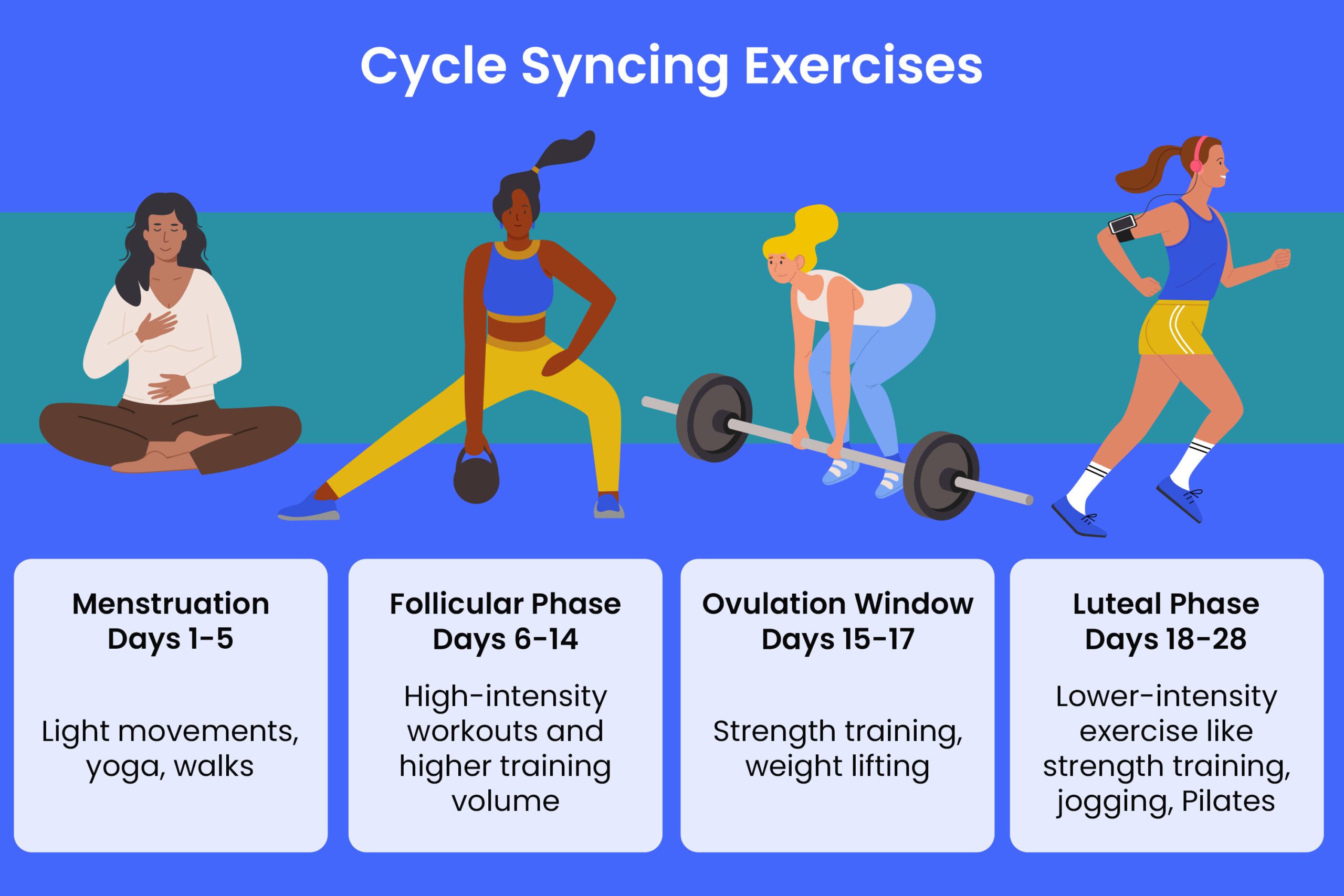
Cycle Syncing: Tailoring Food & Workouts to Menstrual Phases
What Is Cycle Syncing?
Cycle syncing is a wellness trend that adjusts diet, exercise, and lifestyle to the four menstrual cycle phases—menstruation, follicular, ovulation, and luteal. It empowers you to maximize energy peaks, ease symptoms, and respect your body’s natural infradian rhythm.
Cycle syncing involves listening to your body’s monthly hormonal shifts and aligning habits accordingly. While scientific evidence is still emerging, many report improved mood, reduced PMS, and better fitness alignment.
Expanding on that, cycle syncing offers a compassionate approach to wellness that acknowledges hormonal fluctuations rather than working against them. Instead of pushing through low-energy days or ignoring signs of burnout, it encourages tuning in and adapting your lifestyle accordingly. This practice helps foster body literacy, allowing you to anticipate changes and respond proactively rather than reactively.
The Four Phases & How to Sync
-
Menstrual Phase (Days 1–5)
- Hormones: Low estrogen and progesterone; low energy.
- Diet: Focus on iron-rich foods (spinach, lean meat, legumes) and vitamin C to aid absorption.
- Exercise: Gentle movement like walking, yoga, Pilates; listen to your body’s need for rest.
-
Follicular Phase (Days 6–14)
- Hormones: Rising estrogen; building energy.
- Diet: Emphasize lean proteins, complex carbs (oats, sweet potatoes), healthy fats (avocados, nuts), and cruciferous veggies (broccoli, cauliflower, cabbage).
- Exercise: Begin moderate cardio and strength training—your stamina is resurging.
-
Ovulatory Phase (Days 15–16)
- Hormones: Peak in estrogen and testosterone; high energy & libido.
- Diet: Continue supportive foods; stay well-hydrated.
- Exercise: High-intensity workouts (HIIT, lifting, running)—this is your peak performance window .
-
Luteal Phase (Days 17–28)
- Hormones: Progesterone rises; may lead to PMS.
- Diet: Opt for complex carbs, high fiber, protein-rich snacks, and healthy indulgences (dark chocolate, nuts) to satisfy cravings . Stay hydrated to reduce bloating.
- Exercise: Choose low-impact cardio, yoga, gentle strength training—support recovery and stress relief.
Beyond Diet & Exercise
Cycle syncing extends into daily life:
- Sleep: Rest during low-energy phases, boost productivity mid-cycle.
- Mindset: Expect emotional swings (PMS/luteal phase), take self-care pauses.
- Fertility Awareness: Syncing builds cycle awareness, not contraception; helps with conception timing.
Evidence, Expert Insights & Caveats
- Some evidence supports mental, menstrual, and performance benefits, though large clinical studies are limited.
- Critics point out lack of robust clinical proof, cautioning against overclaiming hormone-balancing effects.
Key takeaway: listen to your body, adapt as needed, stay moderate and flexible .
Getting Started: Practical Tips
- Track your cycle: Use apps or a journal to note dates, mood, energy, cravings.
- Adjust gradually: Start with meals and workouts—low to high intensity across phases.
- Stay flexible: Not every phase is predictable—tailor to your unique rhythm.
- Observe: Evaluate how you feel (energy, mood, period symptoms) and refine.
Conclusion
Cycle syncing isn’t a rigid rule, it’s a self-care framework to honor your body’s monthly rhythm. By aligning diet, exercise, sleep, and mindset with cycle phases, many find smoother energy flow, reduced cramps, and better alignment with their bodies. It’s not a cure-all, but a mindful tool in your wellness kit.
Incorporating this method doesn’t mean overhauling your entire routine overnight. Small, intentional shifts like choosing lighter workouts during your menstrual phase or prioritizing creative tasks during ovulation can make a noticeable difference in how you feel day to day. It also serves as a powerful reminder that productivity and self-care can and should coexist.
Ultimately, cycle syncing empowers you to be more in sync with yourself, promoting a sustainable balance between effort and rest. Whether you’re managing symptoms, aiming to boost energy, or simply seeking a deeper connection with your body, this approach offers a supportive path forward rooted in awareness, flexibility, and self-respect.
All Categories
Recent Posts
Blossomflow’s Impact Series: Blossomflow & NYSC at Iwerekun Secondary School
Why Ending Period Poverty Is a Responsibility We All Share
The Link Between Poor Sanitation Facilities, Infrastructure Development & Period Poverty
Tags
Give them a helping hand
Every donation fuels our mission to combat period poverty. Your generosity brings us closer to menstrual equity.
+234-909-482-1642
inquiries@blossomflow.org




